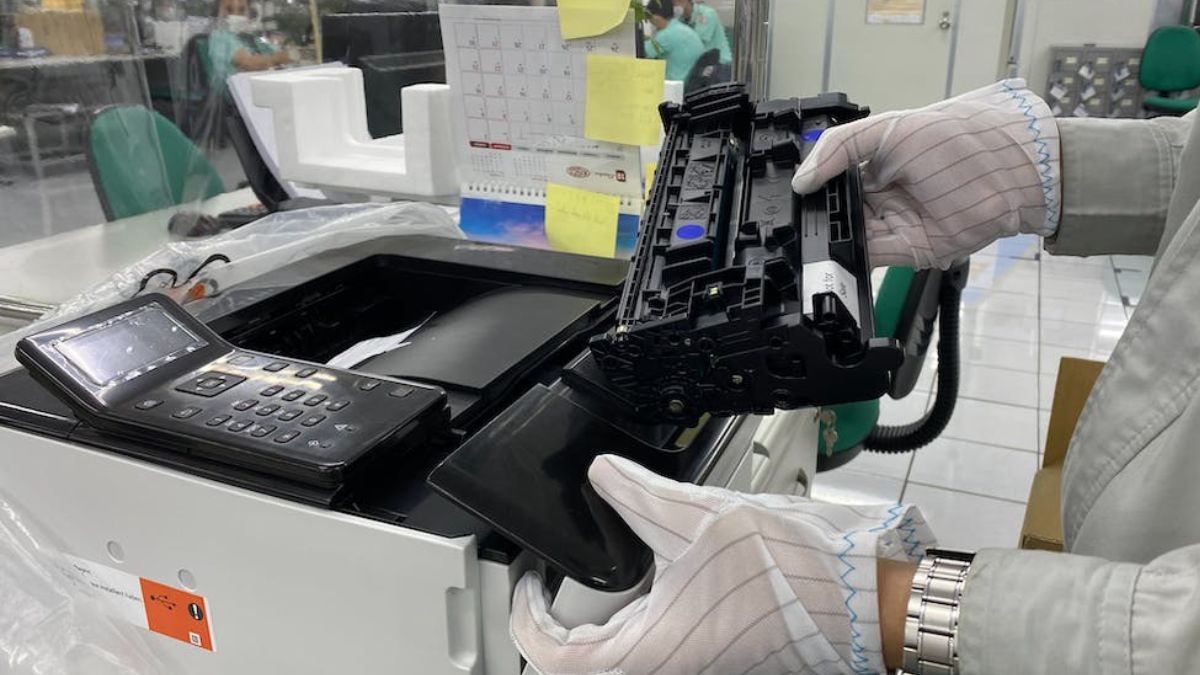The technology behind printing has advanced significantly in recent years. Sublimation printing is among the most cutting-edge methods of mass production. Digital sublimation printing is a method of transferring dye onto many different substrates by applying heat. The purpose of this essay is to explain what sublimation printers are, how they function, and what advantages they offer.
What is a sublimation printer?
Sublimation printers are a special kind of digital printer that transfer dye onto paper, fabric, and other substrates by means of heat. During the dye sublimation technique, an image is first printed with special dye-based inks onto transfer paper, and then the image is transferred to the material through the use of heat and pressure.
How does a sublimation printer work?
The unique ink used by sublimation printers evaporates into a gas and chemically binds with the substrate. There are essentially four stages to the process:
- Designing the Image: The first thing to do is come up with a print-ready image. A graphic design program or an existing picture can be used for this purpose.
- Printing the Image: The next step is to use a sublimation printer and sublimation ink to print the image onto special transfer paper.
- Transferring the Image: When heat and pressure are applied to the transfer paper, the ink on the paper begins to sublimate and bond with the material below.
- Cooling the Material: The ink is then given time to thoroughly bond with the material by cooling it to room temperature once the picture has been transferred.
What are the benefits of using a sublimation printer?
- High-Quality Prints: Prints made with sublimation printers are of excellent quality, lasting for a long time without fading or wearing out.
- Versatility: Fabrics, plastics, and even metals are all fair game for sublimation printers.
- Durability: Sublimation printing produces prints that are both long-lasting and protected from the elements.
- Cost-Effective: Sublimation printing is a cheap way to make high-quality custom items.
- Environmentally Friendly: Sublimation printing is eco-friendlier than conventional printing because it employs water-based inks.
Types of sublimation printers:
Sublimation printers can be divided into two categories: inkjet and dye-sublimation. Cartridges of sublimation ink are used in inkjet sublimation printers, while dye-sublimation printers print on a roll of film covered with sublimation dye. Dye-sublimation printers are often more expensive than inkjet sublimation printers, but they produce higher-quality prints and use less ink.
Applications of sublimation printing:
Sublimation printing can be used for a variety of purposes, such as:
- Apparel: Personalized t-shirts, jerseys, and other garments can be made using sublimation printing, which is widely utilized in the textile business.
- Promotional products: Mugs, keychains, and phone covers are just some of the promotional items that may be printed on using sublimation printing.
- Signage: High-quality signs and banners are also produced using sublimation printing in the signage business.
- Home decor: Sublimation printing is used to create personalized photo frames, wall art, and pillows, all of which can be displayed proudly in your house.
- Sports equipment: Sublimation printing is used to make one-of-a-kind hockey sticks, soccer balls, and other sporting goods.
Tips for using a sublimation printer:
- Use high-quality sublimation ink: If you want your prints to last, you need to use high-quality sublimation ink.
- Use compatible substrates: The substrates you use for sublimation printing must be compatible with the ink, and those substrates include polyester textiles, ceramic, and metal.
- Use a heat press: The sublimation ink must be transferred to the substrate using a heat press. When determining the ideal temperature and pressure, refer to the manufacturer’s guidelines.
- Calibrate your printer: If you want reliable color reproduction and consistent printout quality, you need to calibrate your printer regularly.
- Store your ink properly: Sublimation ink needs to be kept out of the sun and in a cool, dry place.
Conclusion:
To sum up, sublimation printer is a cutting-edge printing procedure that has numerous advantages over the more conventional alternatives. Inkjet sublimation printers make prints that are vivid, durable, and adaptable. They last a long time, don’t harm the environment, and don’t break the bank. A sublimation printer is a great investment if you want to make high-quality, customized goods.
Sublimation printing is a cutting-edge printing method with many practical and useful applications. A sublimation printer is a great investment for anyone wishing to create promotional items for their business or to add a personal touch to their apparel or home decor. If you follow the advice in this article, your sublimation printer will provide you with high-quality, long-lasting prints.











